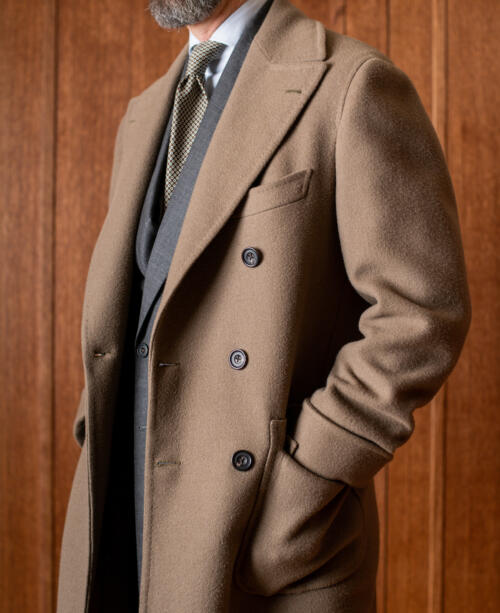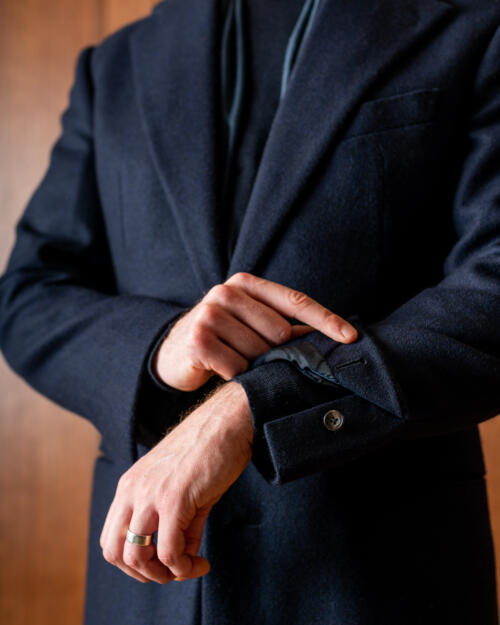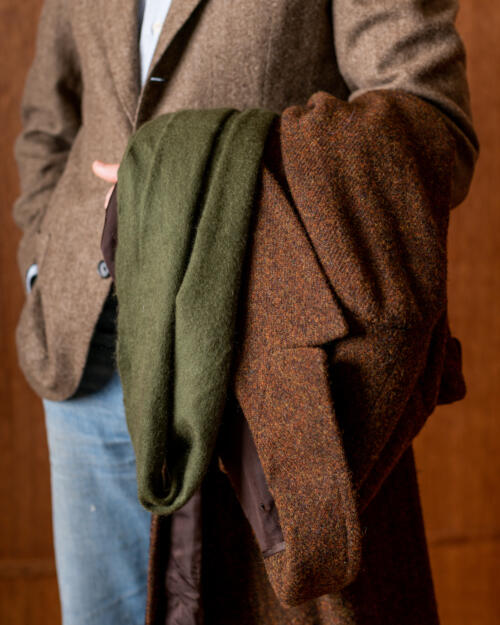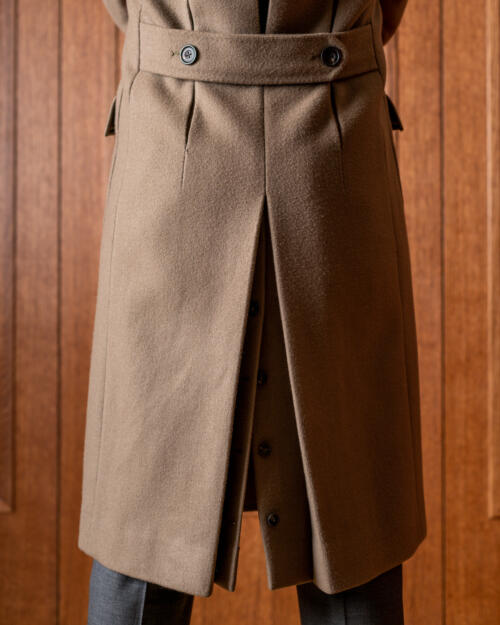
Next week we’ll begin a series of articles that breaks down the style of my bespoke coats, building on the popular 2018 series that looked at suits and jackets.
That turned into a book, Bespoke Style, which was a great illustration of the rich variety in bespoke, from draped English to precise French to relaxed Neapolitan.
But with fewer people wearing suits, overcoats feel more relevant than ever, and that seems like the natural next step. I also think a bespoke overcoat is a truly beautiful thing, more versatile often than other tailoring, and probably more likely to be handed down the generations. My coats are my most commonly worn bespoke commissions, and some of my favourites.

The interesting thing about bespoke overcoats is that there are fewer obvious differences between tailors, but perhaps more in the details.
The way the back is constructed, for example, varies hugely. Some like the Florentines use one big pleat all the way down, simply tacking in the middle underneath the belt. Neapolitans are cleaner, perhaps surprisingly, while the French usually try to control everything, with the fullness stitched down in darts.
There is also a good amount of variation between tailors, and a lot between styles of coat. All Neapolitans don’t make an ulster the same, and a peak-lapelled guard’s coat is very different to either.
The aim of the series, therefore is not to be as comprehensive as the jackets/suits series, as that would essentially be impossible. Instead, it is to provide readers with the kind of tools that allow them to look at a bespoke coat and work out how and why they like it or they don’t.
This level of understanding, I find, releases a lot of enjoyment in bespoke. It’s less about arguing over how clean the back of a jacket should be, and other nitpicking forensics; it’s more about appreciating how something is made, what gives it style, and loving it more as a result.
That’s certainly been my experience with looking at my coats for this series, and I hope it’s yours too.

This introductory article is one I’ll refer people back to with any questions about the methodology, so I’ve included a few things below that will apply across the entries. If you have any questions let me know, and I can add them here as well.
How measurements are taken:
- Shoulder width: Length of the shoulder seam, from where it meets the collar (the neck point) to where it ends in the sleeve head
- Gorge height: Distance from the point of the lapel to the shoulder seam, vertically (this is probably misnamed, but it’s what we used in the last series so I’m sticking with it for consistency)
- Lapel width: From that point of the lapel to the inside edge of the coat, horizontally
- Buttoning point: From the waist button to the neck point in a straight line; on a DB, from halfway between the two waist buttons, to the neck point.
- Wrap: On a double breasted, the distance between the middle of the two waist buttons
- Back length: Length of the central back seam/line, from the bottom of the collar to the hem
My measurements (for context on the above)
- Height: Six foot / 183cm
- Chest: 39 inches / 99cm
- Waist: 33 inches / 84cm
- Inside leg: 31.5 inches usually (80cm)
Do note that throughout the series, as with the first set, we will be shooting the coats as they are, after years of wear. They have been well cared for, but have not been pressed specifically for the shoots. We feel this is more realistic and natural. The focus is also the style rather than the fit, which will usually have been covered in original reviews of the pieces.
We’ll start with the first coat, my ulster from Sartoria Ciardi in Naples, next week. Any questions on the clothes pictured, please hold off until then



.JPG)
